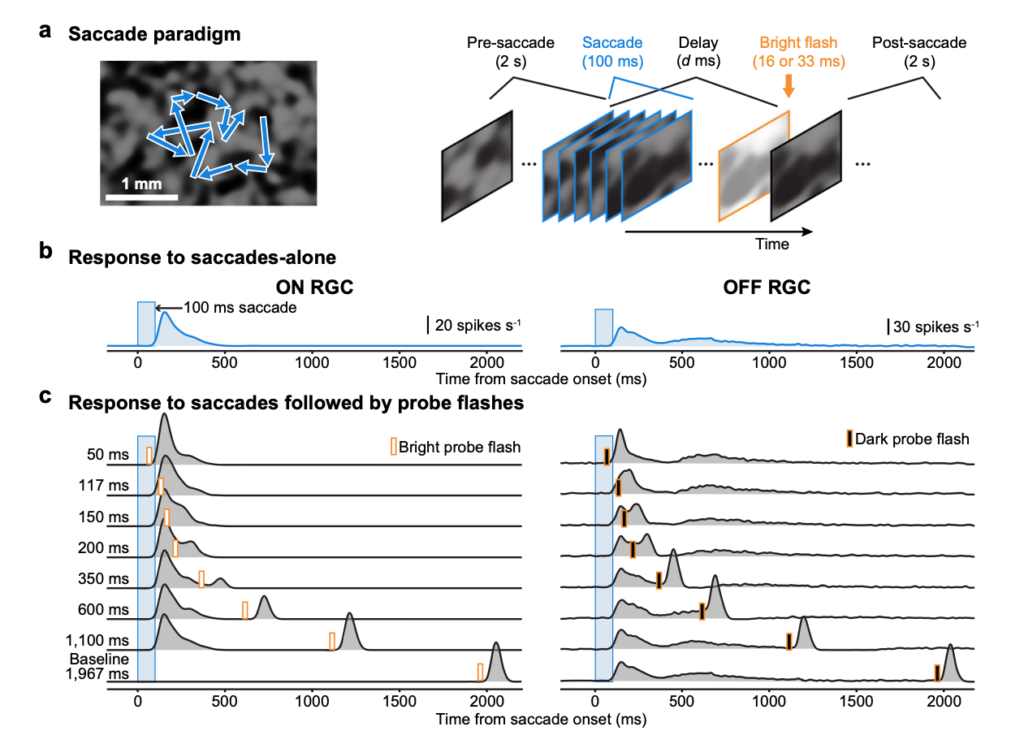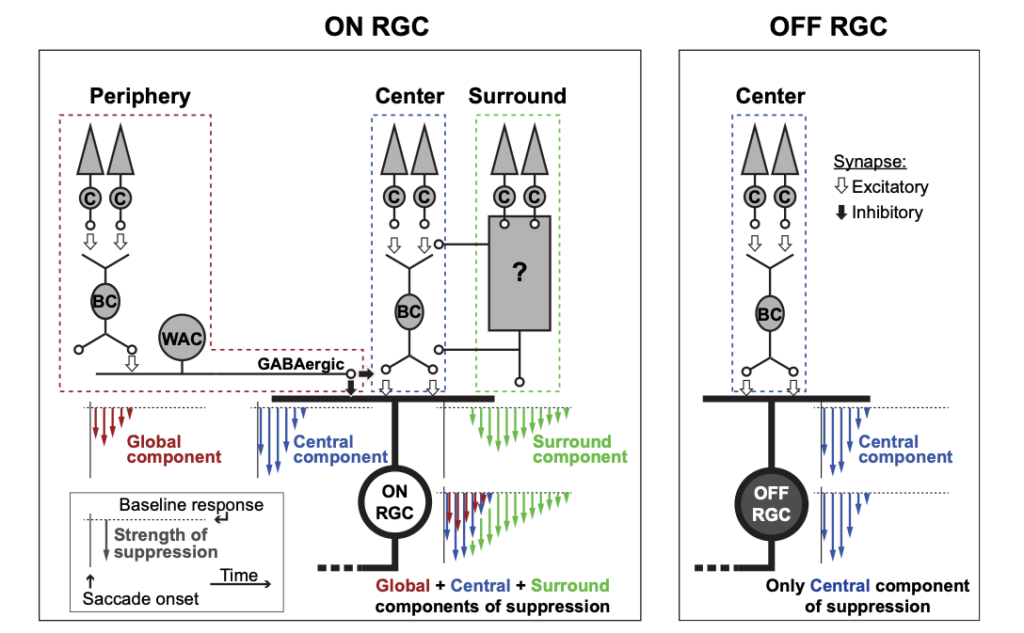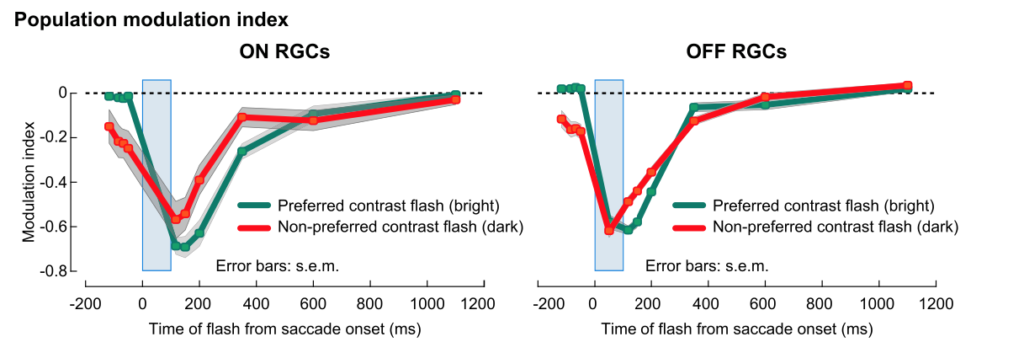We have a new paper now out in Communications Biology! This is a massive study combining electrophysiological recordings in mouse, pig, and macaque monkey retinas with 2-photon calcium imaging, computational modeling, and human psychophysics. The aim? To understand the retinal mechanisms underlying the well-known phenomenon of perceptual saccadic suppression.
In previous studies, like this one and this one, we studied the retinal (and, more generally, visual) contributions to saccadic suppression. To describe this robust visual phenomenon is quite easy: visual sensitivity to stimulus onsets is dramatically reduced if the onsets occur around the time of saccade onset (hence the name saccadic suppression). However, the mechanisms behind such a striking perceptual phenomenon have been elusive. Some people argued for visual-only mechanisms, whereas others argued that the saccade motor command in the brain is what suppresses visual sensitivity.
In our past work, we found that a large component of perceptual saccadic suppression actually originates in the retina, the very first visual processing stage and upstream of any eye movement commands generated by the brain. We did this by introducing rapid image shifts to isolated pieces of retinal tissue, and comparing the retinal responses to these image shifts with the real perceptual responses of humans performing real saccades or just experiencing rapid image shifts on their live retinas.

In this latest new paper, we delved deeper into the mechanisms associated with retinal saccadic suppression. For example, how might ON and OFF visual channels in the retina react during perceptual suppression? We found massive differences in suppression time courses and properties across different retinal ganglion cell types, resulting in a highly detailed mechanistic view of how the retina behaves during perceptual saccadic suppression. We even isolated photoreceptor level effects as jumpstarting the whole process, suggesting that perceptual saccadic suppression can actually be jumpstarted by the most peripheral visual detectors of the visual system.

Perhaps the most intriguing result for us came about when we explored time courses of retinal signal processing; this deep dive into the retinal mechanisms of perceptual saccadic suppression has revealed a most awe-inspiring discovery for us: pre-saccadic suppression of perceptual sensitivity (that is, for stimuli that occur before saccade onset) can still be jumpstarted in the retina! That is, even though the retina cannot tell that a movement command is about to be issued by the brain, its visual processing machinery still gives rise to a pre-emptive suppression of visual sensitivity for stimuli appearing right before saccade onset. This occurs as a result of the time courses with which some retinal neurons process stimuli: a stimulus appearing before the retinal image shift caused by saccades might have its occurrence neurally influence the retina after the retinal neural influence of the global image shift itself. This results in a suppressed processing of the pre-movement stimulus, giving rise to the well-known observation that perceptual saccadic suppression actually starts well before saccade onset.

